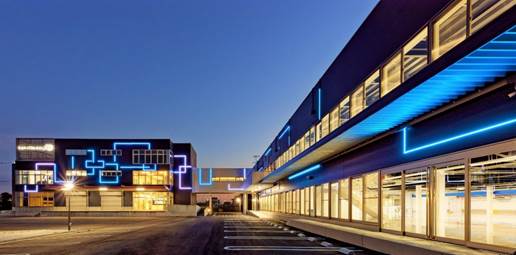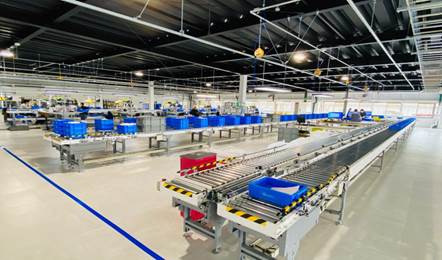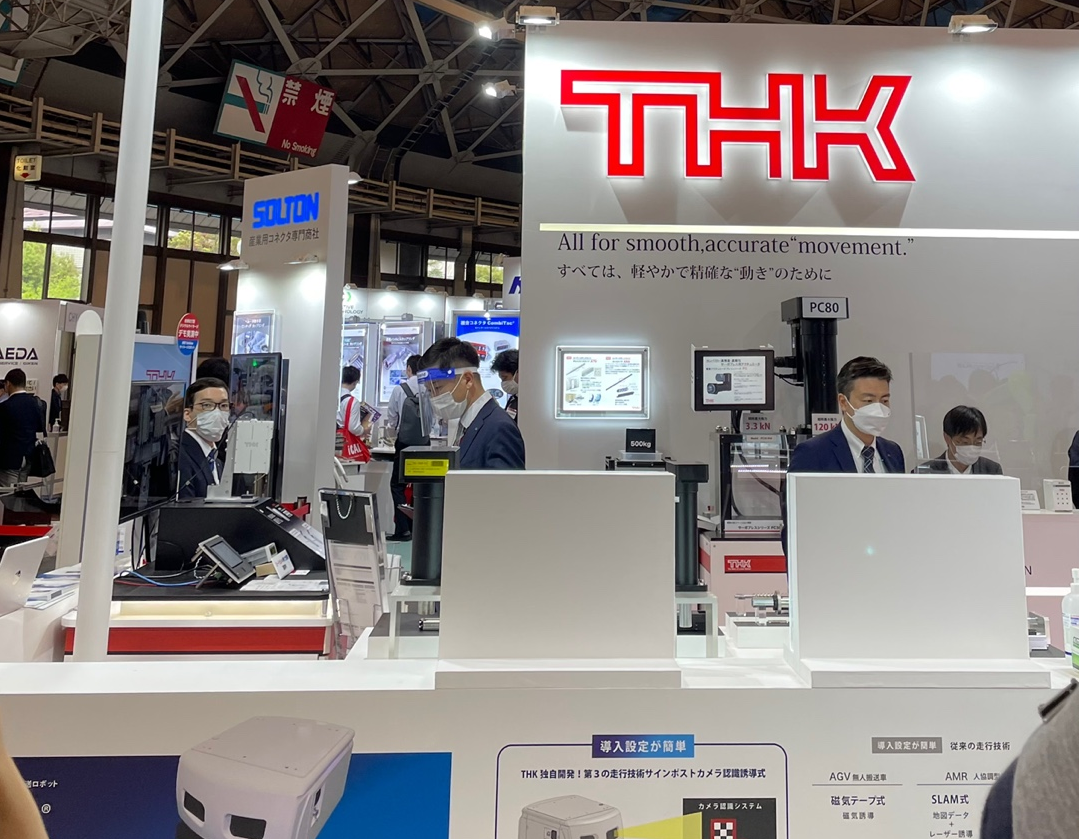– Future growth prospects for the Japanese smart factory market
– Smart factory status through case studies of Japanese companies
– Efforts are needed to solve future challenges
A smart factory is a factory that utilizes digital technologies such as AI and IoT (Internet of Things). By utilizing digital technology, digital transformation (DX) of the entire business process from design to manufacturing and maintenance can be realized, and high-quality, high-value-added products can be manufactured at low cost in a short period of time, resulting in high productivity and efficiency. Unlike the mechanization and automation of production lines using existing robots, the smart factory collects and utilizes data. Data acquired from IoT sensors, etc. in real time is sent to the cloud and server, and the data is analyzed by AI and reflected in the field to streamline the manufacturing line. The smart factory market size is expected to increase from USD 2021 billion in 801 to USD 2026 billion in 1,349, with a CAGR of 11%.
Smart Factory Market Trend in Japan
According to a survey by Yano Economic Research Institute, projects suspended in 19 due to the impact of COVID-2020 will resume, and the digital transformation market size of Japanese factories in Japan in 2021 is expected to increase by 1% from the previous year to 6,760 billion yen based on the order amount. it is expected In 6.3, some industries are expected to stagnate due to a decrease in facility investment, but it is expected to increase solidly based on the strong will to invest in plant systems in the transportation machinery manufacturing industry, electronic parts/device/electronic circuit manufacturing manufacturing, and production machinery manufacturing manufacturing. It is predicted that the factory digital transformation market will increase as there is a demand for renewal of aging production facilities and equipment, reduction of manpower resources and automation response in factories in other industries as well.
<Forecast of Japanese domestic factory digital transformation market>
(Unit: XNUMX million yen)

[Source: Yano Economic Research Institute]
What is the status of smart factories in Japan?
In domestic factories in Japan, next-generation maintenance and visualization work has begun, such as failure and operation monitoring and energy usage visualization that will utilize cutting-edge technology in many industries. In addition, the use of IT technology is increasing in the areas of inspection, production optimization, and operator support, such as quality control and external inspection. This is a phenomenon that is occurring due to a shortage of manpower at the manufacturing site, improvement in productivity, and the need to save energy.
In recent years, more and more large-scale facilities have built-in communication functions from the beginning, and the use of IoT in production sites is rapidly increasing in companies that are new to factories or production lines, companies that aim for manpower reduction and automation, and companies with a serious labor shortage. is attracting attention.
We would like to find out how Japanese companies are introducing and using smart factories through examples.
Cases of Japanese companies that introduced smart factories
1. Tel-mic Co., Ltd.
<Company view>

[Source: Tel-mic Co., Ltd. home page]
April 4 Tel-mic Co., Ltd. Participated in the smart factory seminar hosted by the company and confirmed the current status of smart factory introduction in Japan. To introduce the smart factory that the company is promoting, three things can be mentioned as follows.
① DX
We succeeded in reducing manpower resources by introducing the AGV automatic transfer system, the AUTO STORE management system (driving robot), and the Sunrise High School Management System.
②IoT
Energy management solution A power monitoring system was introduced, and the number of manpower required per job was reduced by providing work orders or remote support through the introduction of a terminal for on-site work support. In addition, as AI, an automatic warehouse and an unmanned transfer robot were introduced to realize smart factories, and the introduction of a high-speed warehouse (Rotary Lock: OKAMURA Co., Ltd) improved the efficiency, such as doubling the factory warehousing capacity.
③ Environmental response (reduction of carbon dioxide)
By preparing a green budget, investing in environmental conservation activities, and introducing solar power, the renewable energy ratio reached 2022% and the recycling rate was 40% by 80. It aims to grow into a company that can positively influence the external environment by actively promoting the SDGs, the international development goals, by 2030.
Q1. What motivated you to start a smart factory?
A1. By reducing energy and manpower resources, price competitiveness was improved, and productivity was increased to increase sales. In addition, it is said that the smart factory was introduced to not only improve quality by reducing human difficulties, but also reduce overtime hours and reduce the burden on employees.
Q2. What are the advantages of adopting the smart factory?
A2. Tel-Mic succeeded in reducing 1/3 of the workforce after introducing the smart factory and reducing unnecessary working hours. If the production facilities in the factory are optimized and an efficient production system can be established, products that meet the changing market needs can be manufactured, resulting in cost reduction. It is said that the total cost of introducing the facility in Tel-Mic is about 10 billion yen. Sales increased as the business shifted to office sales, which was analyzed to be more effective. As a result, sales increased rapidly to about 5 billion yen in the past five years.
Q3. What are Tel-Mic's future goals?
A3. By expanding overseas group companies or factories, the government will move toward 2030G in 6. We want to create an innovative logistics method that can immediately respond to customer requirements and global needs by building an efficient logistics method using digital transformation.
<Factory inside facility>

[Source: Tel-mic Co., Ltd. home page]
Interview with companies participating in Nagoya Monozukuri World
2. THK Corporation ( https://www.thk.com)
<Exhibition view>

[Source: KOTRA Nagoya Trade Center]
– Industrial Equipment General Division Sales Division Team Leader K
THK Co., Ltd. provides IoT services to the manufacturing industry, and develops, produces, and supplies devices and mechanical parts for semiconductor manufacturing devices and industrial robots to the world. In the actual exhibition, a transport robot that moves autonomously by checking the sign post (target) with the built-in camera was exhibited, and it is said that it is being used in many manufacturing and logistics sites. While the shortage of manpower is getting serious in the recent labor field, they want to reduce the number of employees in charge of simple tasks and improve the productivity of field staff. Therefore, we have developed a 'transport robot' that can not only automate the transport (meaning moving) work done by humans, but also improve productivity by cooperating with people. Therefore, it was mentioned that field staff who are not familiar with robot operation can easily handle it.
3. Hoan Industrial Co., Ltd. (https://www.e-houan.co.jp/iot/))
– IoT Product Development Project Team Project Manager I
Hoan Industrial Co., Ltd. provides IoT solutions to factories and designs and develops solutions to solve customer concerns and problems. In other words, it is difficult to see the various factory conditions one by one, 'I want to reduce labor costs', 'It is difficult to continuously manage equipment troubles', 'I want to stop analog management but I don't know how to start' If there is a task, Hoan Industrial Co., Ltd. strives to improve the task of each factory. For example, there are activities such as introducing a wireless IoT cloud recorder to prevent equipment failure in advance, reducing labor costs through unmanned management, and promoting efficiency in factory management. I, who conducted the interview, mentioned that she is interested in the current status of smart factories in Korea because she has experience doing business with Korea, and that she wants to advance not only in Japan but also overseas.
4. GUGEN Co., Ltd. (https://www.gugen-inc.com/)
– Sales group K
GUGEN Co., Ltd. is engaged in consulting business related to business planning, product planning, development and sales, as well as planning, development, design, manufacturing, and sales of production equipment centered on IoT. In this exhibition, a remote monitoring system called 'PUSHLOG' and a system that records the status of manufacturing equipment and facilities at all times were exhibited.
Q1. In what situations can this device be used?
A1. This machine can be installed to notify the situation from the field when a problem occurs in the factory. Even if there is no human monitoring as in the prior art, the introduction of this device enables remote monitoring, thereby reducing labor costs. In addition, the device itself is compact and easy to connect, and the setup is also simple. I want to start IoT or DX, but I don't know how long it will take and I think it looks difficult, and companies can install this device without any problems.
Q2. Are you currently doing business overseas?
A2. Although I have no experience in exporting overseas, I am considering expanding overseas from now on.
Advantages and hindrances to the introduction of smart factories
1) Advantages
① Visualization of manufacturing process
Using IoT technology using cameras and sensors, it will be possible to visualize and quantify the movement of people and objects in a factory, and to immediately share necessary data in real time.
② Resolving the labor shortage problem and nurturing human resources
Japan currently has a problem of a shortage of skilled workers due to the aging of the working population and the decrease in the working population. In addition, it is also a problem that it is difficult to inherit the excellent skills of skilled workers. If technology is recorded as data using IoT, it can be used to nurture successors, and it will also help alleviate the shortage of manpower.
③ Prevention of problems and stabilization of production
By utilizing technologies such as IoT, AI, 5G, AR, and VR, a digital twin (data collected in the real world is reproduced and simulated on a PC) is possible. It is possible to prevent failures or problems in the future by checking in advance, and this can realize the stabilization of the production line.
④ Sharing information within the company and accelerating work
By introducing a smart factory, data acquired within the factory can be quickly shared with other departments, so that various business decisions such as production planning, facility investment, and inventory management can be made quickly.
⑤ cost savings
It is possible to reduce costs by reducing waste caused by personnel, equipment, equipment operation, and transportation. In the long term, it has the effect of reducing various costs related to production.
⑥ Creation of new added value, improvement of provided value
Smart Factory can provide customized products optimized according to customer's taste, and it is possible to provide added value such as after-sales service tailored to customer's situation. By applying the IoT sensor and communication function to the product, it is possible to automatically determine the battery consumption status or the time to replace the parts even after shipment, and it becomes possible to develop new products using the obtained information.
2) Factors inhibiting introduction
① Initial cost problem
According to the '2020 Monozukuri White Paper' issued by the Ministry of Economy, Trade and Industry of Japan, only 49.3% of companies are using digital technology. In addition, the smart factory adoption rate of large enterprises is 60.8%, while that of SMEs is 48.5%.
② Integration problem of control device operation technology and information technology
There are two main types of factories: control-related OT (Operation Technology) and information-related IT (Informatino Technology). OT is a control device operating system, and stable operation and system backup are required. However, as IT is an information technology, it is said that integration is not easy because the elements required by the two networks are different.
③ Network security problem
Smart Factory is a new concept that may have security issues and may lead to stable operation of factories.
implication
The smart factory industry is a very important topic in Japan as well, and the construction of next-generation maintenance and visualization systems using IoT, cloud, and AI is already being promoted in production lines in many industries. In particular, the use of IoT is attracting great attention in companies that set up factories and new production lines, companies that want to reduce manpower and cost, and companies with a serious labor shortage.
Meanwhile, challenges remain in the process of collecting, analyzing, and utilizing manufacturing site data. Along with the introduction of AI or IoT systems, digital talents who can strategically design what data to collect and how to use it is needed. However, due to the shortage of advanced IT manpower, it is considered one of the important tasks in the future to not only introduce the system, but also to nurture talents who can use it skillfully.
Source: Comprehensive data from Ministry of Economy, Trade and Industry, Yano Economic Research Institute, website and interview of each company, KOTRA Nagoya Trade Center



